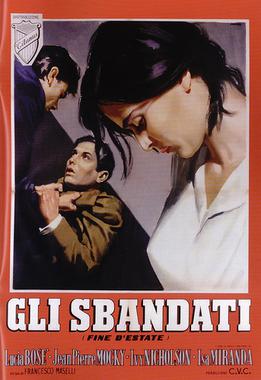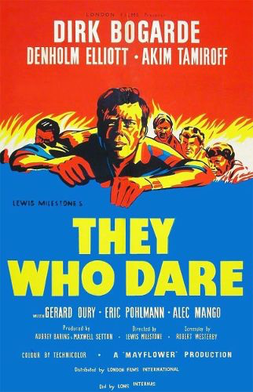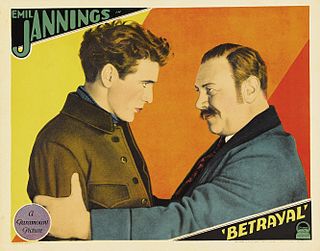
Lewis Milestone was an American film director. Milestone directed Two Arabian Knights (1927) and All Quiet on the Western Front (1930), both of which received the Academy Award for Best Director. He also directed The Front Page (1931), The General Died at Dawn (1936), Of Mice and Men (1939), Ocean's 11 (1960), and received the directing credit for Mutiny on the Bounty (1962), though Marlon Brando largely appropriated his responsibilities during its production.

Diana Dors was an English actress and singer.

Belinda Lee was an English actress.
Cast a Dark Shadow is a 1955 British suspense film noir directed by Lewis Gilbert and written by John Cresswell, based on the 1952 play Murder Mistaken by Janet Green. It stars Dirk Bogarde, Margaret Lockwood, Kay Walsh, Kathleen Harrison and Robert Flemyng. The film was released on 20 September 1955, distributed by Eros Films Ltd. in the United Kingdom and Distributors Corporation of America in the United States. The story concerns a husband who murders his wife.

Isa Miranda was an Italian actress with an international film career.

Massimo Serato was an Italian film actor with a career spanning over 40 years.

Giovanna Ralli,, is an Italian stage, film, and television actress.

Alma Franca Maria Norsa, known professionally as Franca Valeri, was an Italian actress, playwright, screenwriter, author, and theatre director.

Anna Maria Ferrero was an Italian actress.

Abandoned is a 1955 Italian drama film set during World War II directed by Francesco Maselli. It was Maselli's feature film debut.

Fire Over the Sea is a 1947 Italian drama film directed by Michał Waszyński and Vittorio Cottafavi and starring Carlo Ninchi Evi Maltagliati and Silvana Jachino. It was shot at the Farnesina Studios of Titanus in Rome. The film's were designed by the art director Gastone Medin. It earned 45 million lira at the box office.

They Who Dare is a 1954 British Second World War war film directed by Lewis Milestone and starring Dirk Bogarde, Denholm Elliott and Akim Tamiroff. It was released by British Lion Films and in the United States by Allied Artists. The story is based on Operation Anglo that took place during World War II in the Dodecanese islands where special forces attempted to disrupt the Luftwaffe and Regia Aeronautica from threatening Allied forces in Egypt. The title of the film is a reference to the motto of the Special Air Service: "Who Dares Wins".

Adriana Benetti was an Italian actress.
Il mondo perduto is a DVD release of ten short documentaries films directed by Vittorio De Seta between 1954 and 1959.

To Be a Lady is a 1934 British romance drama, directed and produced by George King, and starring Chili Bouchier and Bruce Lester. The film is the first screen editing credit of American film editor Elmo Williams.

Life with the Lyons is a 1954 British comedy film directed by Val Guest and starring Bebe Daniels, Ben Lyon and Barbara Lyon. It was a spin-off from the radio series Life with the Lyons, and the screenplay, by Guest and Robert Dunbar, was based on previous episodes from the show. It was shot at Southall Studios in London with sets designed by the art director Wilfred Arnold.

Betrayal is a 1929 American sound drama film produced for Famous Players–Lasky and released by Paramount Pictures. While the film has no audible dialog, it was released with a synchronized musical score with sound effects using both the sound-on-disc and sound-on-film process. The film is the last film without audible dialogue that was directed by Lewis Milestone, the last non-speaking role performance by Gary Cooper, the last non-speaking performance by Germany's Emil Jannings, and the only onscreen pairing of Cooper and Jannings. It is considered a lost film.

Seven Sinners is a 1925 American black-and-white silent comedy crime film directed by Lewis Milestone and written by Milestone and Darryl F. Zanuck. The film was produced by Warner Bros. Pictures.
Distributors Corporation of America (DCA) was an American film distribution company which distributed 60 films in the US between 1952 and 1959. DCA distributed the 1956 re-releases of The Naked City (1948) and Brute Force (1947), both produced by Mark Hellinger and directed by Jules Dassin.

Nikolai Vladimirovich Remizov, also known as Nicolai Remisoff, was a Russian and American artist, political cartoonist and art director of American cinema. He worked a number of times one films directed by fellow Russian Gregory Ratoff. Before the 1917 Revolution he was the leading artist in russian satirical magazines Strekoza and Satirikon, in which he published his cartoons under the pseudonym Re-Mi.

















